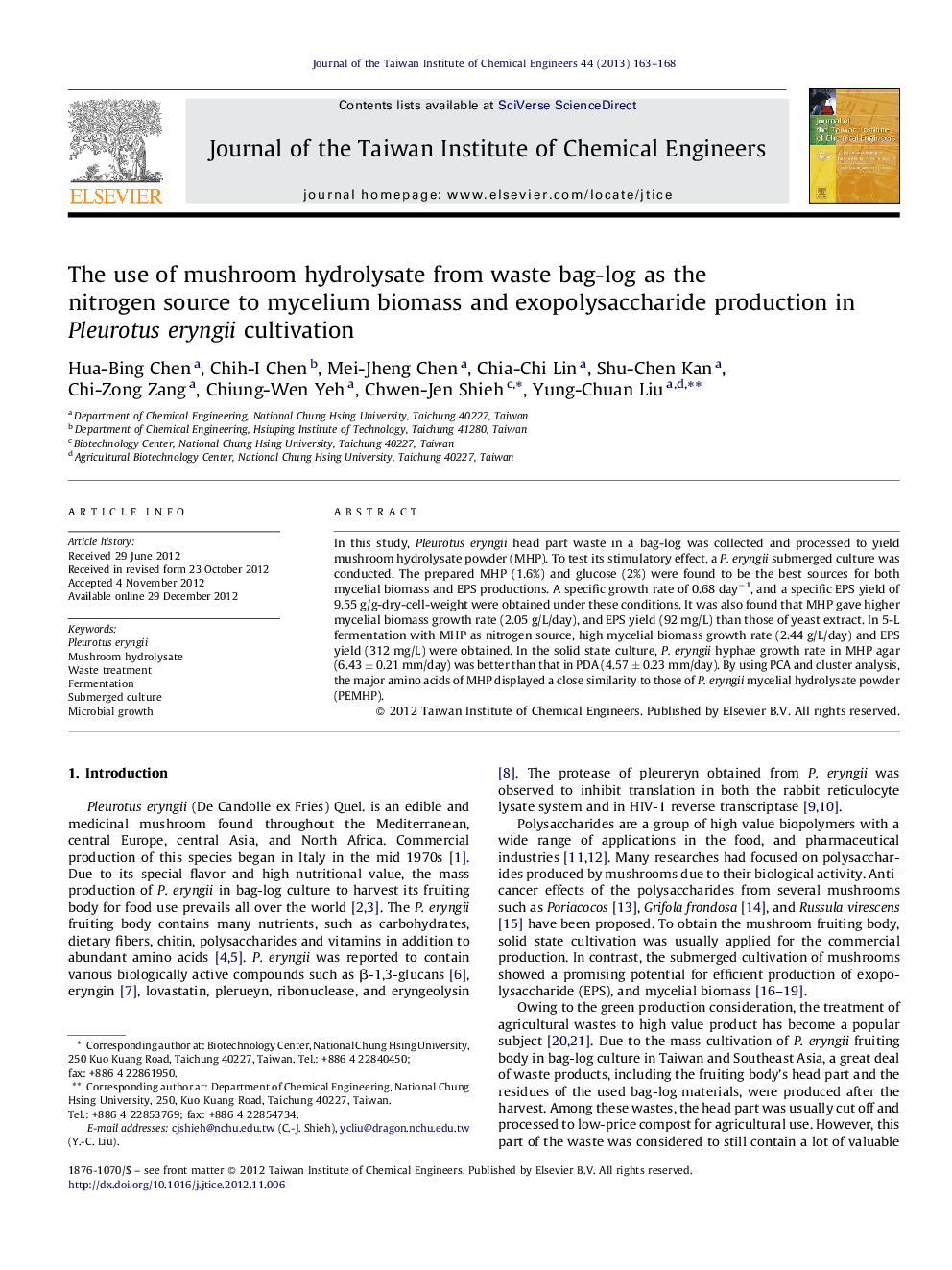| Article ID | Journal | Published Year | Pages | File Type |
|---|---|---|---|---|
| 691311 | Journal of the Taiwan Institute of Chemical Engineers | 2013 | 6 Pages |
In this study, Pleurotus eryngii head part waste in a bag-log was collected and processed to yield mushroom hydrolysate powder (MHP). To test its stimulatory effect, a P. eryngii submerged culture was conducted. The prepared MHP (1.6%) and glucose (2%) were found to be the best sources for both mycelial biomass and EPS productions. A specific growth rate of 0.68 day−1, and a specific EPS yield of 9.55 g/g-dry-cell-weight were obtained under these conditions. It was also found that MHP gave higher mycelial biomass growth rate (2.05 g/L/day), and EPS yield (92 mg/L) than those of yeast extract. In 5-L fermentation with MHP as nitrogen source, high mycelial biomass growth rate (2.44 g/L/day) and EPS yield (312 mg/L) were obtained. In the solid state culture, P. eryngii hyphae growth rate in MHP agar (6.43 ± 0.21 mm/day) was better than that in PDA (4.57 ± 0.23 mm/day). By using PCA and cluster analysis, the major amino acids of MHP displayed a close similarity to those of P. eryngii mycelial hydrolysate powder (PEMHP).
►Pleurotus eryngii head part waste can be processed to mushroom hydrolysate powder. ►Medium with MHP (1.6%) and glucose (2%) was the best sources for EPS production. ►MHP gave a higher yield of EPS (312 mg/L) than yeast extract. ►P. eryngiig hyphae growth rate in MHP agar was better than that in PDA. ► Major amino acids of MHP were very close to PEMHP via PCA.
